Exploring Trichoderma's Impact on Plant Growth and Health
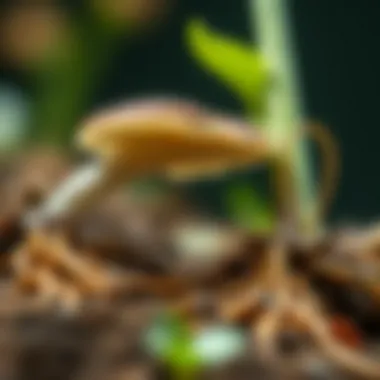

Intro
In the world of agriculture, the quest for enhancing plant health and productivity musn’t be taken lightly. Among the many players in this domain, Trichoderma stands out as a remarkable ally. This genus of fungi has been at the forefront of numerous studies, revealing an intricate tapestry of interactions with plants that can lead to substantial benefits.
The essence of understanding Trichoderma’s role goes beyond mere curiosity; it is crucial for developing sustainable farming practices. The growing interest in organic farming means that biological agents like Trichoderma are viewed not just as add-ons, but as integral components of a healthy ecosystem. Through its various mechanisms, Trichoderma not only supports plant growth but also fortifies them against diseases. This alignment with nature’s own strategies calls for a deeper look into how it works.
Overall, exploring the facets of Trichoderma’s impact is more than an academic endeavor; it’s a vital step towards realizing a more sustainable future in agriculture. Let’s dig into the research overview to grasp how these fungi contribute to plant resilience and vigor.
Understanding Trichoderma
The genus Trichoderma consists of fungi that play a vital role in promoting plant health and growth. Understanding these organisms is crucial for students, researchers, agricultural educators, and professionals. Through a closer look at Trichoderma, we unveil its significance in enhancing not just the yield but also the overall well-being of crops. This section will cover taxonomy and classification, habitat and distribution, as well as morphological characteristics of Trichoderma, creating a robust framework for the discussions that follow regarding its mechanisms and benefits in plant systems.
Taxonomy and Classification
Trichoderma is classified within the Ascomycota division of fungi and more specifically, the Hypocreales order. This group encompasses a diverse array of species, each exhibiting unique characteristics and adaptations. Taxonomically, the classification is further broken down into various sections, reflecting traits observed in morphology and ecology. For instance, species such as Trichoderma harzianum and Trichoderma viride are often touted for their biocontrol capabilities. The vast number of species under this genus highlights the potential for varied applications in agriculture, bioengineering, and even medicine.
Habitat and Distribution
Trichoderma species are found in numerous habitats globally. They thrive in soil, compost, and decaying organic matter, indicating their saprophytic nature. Their abilities enable them to colonize various ecosystems, ranging from agricultural fields to forested areas. Often, it can be found in environments rich in organic materials, as these fungi prefer environments where they can actively participate in nutrient cycling. Recognizing where Trichoderma grows can help researchers harness its capabilities for sustainable agriculture and soil health improvement.
Morphological Characteristics
Morphologically, Trichoderma can be identified by their characteristic green spores and cylindrical conidiophores. These fungi typically form a dense network of hyphae, which are essential for their role in competition against pathogens and nutrient acquisition. Microscopic examination reveals their distinct branching structure, making them easily distinguishable from other fungal taxa. Some species even develop specialized structures like chlamydospores, aiding in survival under adverse conditions. The morphology of Trichoderma is not just about visual identification; it links closely to their ecological roles and influences their interactions with plant systems.
"Understanding the unique characteristics and roles of Trichoderma is essential for harnessing its potential in agriculture and plant health.“
By delving into these aspects of Trichoderma, readers can appreciate the complexities of these fungi and anticipate their significant contributions to sustainable farming practices. The blend of taxonomy, habitat, and traits forms a solid foundation for exploring how these fungi can be manipulated to benefit agriculture and ecosystem health.
Mechanisms of Action
Understanding the mechanisms behind Trichoderma's effects on plants is crucial. This knowledge lays the foundation for their application in various agricultural settings. Each mechanism highlights how Trichoderma interacts with plants and contributes to their health and growth. Below are the primary mechanisms through which Trichoderma exerts its beneficial roles.
Mycoparasitism
Trichoderma fungi have a knack for parasitizing other fungi, an aspect known as mycoparasitism. This characteristic allows Trichoderma to thrive in environments laden with competing fungal pathogens, such as Fusarium, Rhizoctonia, or Phytophthora. When Trichoderma encounters these adversarial fungi, it employs a range of strategies. It can produce enzymes, like cellulases and chitinases, which break down the cell wall of its foes, ultimately leading to their demise.
- Enzymatic Breakdown: Enzymes secreted by Trichoderma act like microscopic swords, effectively dismantling the cellular structures of pathogenic fungi.
- Nutrient Competition: By occupying the same ecological niche, Trichoderma not only reduces the resources available to harmful fungi but also enhances nutrient availability for neighboring plants, creating a thriving biotic community.
This particular mechanism provides an effective bio-control approach against soil-borne pathogens, minimizing reliance on chemical fungicides and promoting a healthier ecosystem.
Antibiotic Production
Besides mycoparasitism, Trichoderma species are well-known for their ability to produce a variety of antibiotics. These compounds play dual roles in inhibiting the growth of pathogens and boosting plant health. For instance, Trichoderma can generate antibiotics like gliovirin and trichodermin.
- Diverse Antifungal Activity: Antibiotics from Trichoderma have a broad-spectrum activity against various fungi, demonstrating the potential for expansive application in agriculture.
- Plant Defense Enhancement: These substances not only stifle pathogens but also signal plants to bolster their own defense mechanisms, creating a proactive line of defense instead of a reactive one.
By understanding how these antifungal agents work, farmers can leverage them to enhance crop resilience and reduce disease prevalence in their fields.
Induction of Plant Defenses
Another significant mechanism lies in Trichoderma's capacity to induce plant defense responses. When plants are colonized by Trichoderma, they can sense its presence and react accordingly, which primes them for future attacks by pathogens.
- Systemic Acquired Resistance (SAR): This phenomenon allows plants to build up defenses not just in the direct vicinity of Trichoderma, but throughout their tissues. Phenolic compounds and pathogenesis-related proteins are common products of this heightened state of awareness, providing an extra layer of fortification.
- Enhanced Growth Factors: Some studies suggest that Trichoderma can upregulate growth hormones in plants, further promoting overall vigor and health alongside defense.
This induction of defenses enables a form of biological protection that can be essential for crops exposed to multiple stressors in dynamic agricultural environments.
Enhancement of Nutrient Availability

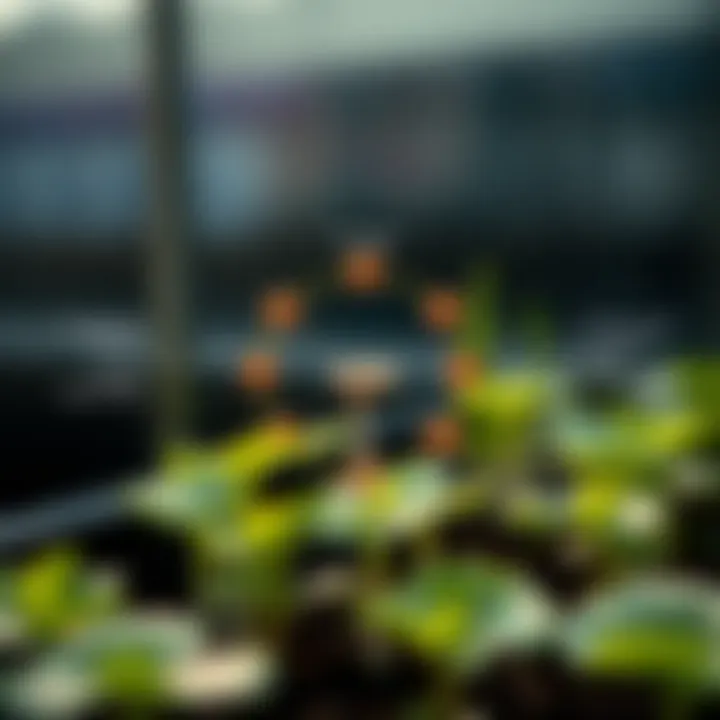
Finally, Trichoderma plays a pivotal role in improving nutrient availability for plants. This is especially important considering the declining soil health many farms face due to overexploitation and poor management practices.
- Mycorrhizal Relationships: Trichoderma partners with mycorrhizal fungi, enhancing nutrient uptake—specifically phosphorus, which is crucial for root development and overall plant health.
- Decomposition of Organic Matter: Through its filamentous growth, it breaks down complex organic compounds, transforming them into simpler, more accessible forms of nutrients for plants.
- Organic Matter Mobilization: Trichoderma can also solubilize minerals like potassium and magnesium, which helps in making them more accessible to plant roots.
Together, this enhancement of nutrient availability can lead to increased crop yields, less need for artificial fertilizers, and a move toward more sustainable farming practices.
In sum, the mechanisms of action employed by Trichoderma are multifaceted and interconnected, presenting organic solutions to modern agricultural challenges.
Benefits in Agriculture
The application of Trichoderma species in agriculture presents numerous advantages that cannot be overlooked. As global populations grow, the pressure to enhance food production increases, leading to an upsurge in interest surrounding sustainable agricultural practices. Trichoderma plays a remarkably significant role in promoting plant health, improving soil quality, and even contributing to crop yield enhancement. These benefits are vital not just for economic returns but also for ecological balance.
Disease Suppression
Fungal Pathogen Control
When it comes to controlling fungal pathogens, Trichoderma shines brightly. One of its key characteristics is its ability to outcompete harmful fungi for nutrients and space in the soil. This biocontrol method is particularly beneficial in settings where synthetic fungicides might pose risks to either human health or environmental integrity.
A unique feature of this control mechanism is mycoparasitism, where Trichoderma directly attacks and degrades the mycelium of various fungal pathogens. This can lead to significant disease suppression in crops, making it a popular choice for farmers looking to minimize chemical inputs. The advantages of relying on Trichoderma for fungal management include lower residue levels in harvested crops and a reduced risk of developing pathogen resistance, which is a growing concern with conventional fungicide use.
Bacterial Pathogen Mitigation
Bacterial pathogen mitigation is another area where Trichoderma proves its worth. Some strains have demonstrated effective inhibition of harmful bacteria through the production of antimicrobial compounds. This property is vital because bacterial diseases can often wreak havoc on crops, leading to substantial economic losses.
The key characteristic here is the broad-spectrum activity of certain Trichoderma species against a variety of bacteria. This makes them a valuable ally in Integrated Pest Management (IPM) programs. The unique feature about this mitigation strategy lies in its eco-friendliness; relying on naturally occurring fungi can help maintain a balanced ecosystem while providing effective disease control. However, one must consider that not all strains of Trichoderma may exhibit the same efficacy against specific bacterial pathogens, which requires careful selection and application.
Promotion of Seed Germination
Seed germination is another area significantly influenced by Trichoderma. The fungi can enhance germination rates by solubilizing nutrients and making them available to the developing seed.
Promoting early root growth, Trichoderma improves the overall vigor of seedlings, making them not just hardier but more likely to thrive in challenging conditions. This offers farmers a head start in cultivating healthy crops, enhancing productivity right from the start.
Improvement of Soil Health
Soil Structure Enhancement
Improving soil health is fundamental for sustainable agriculture. Trichoderma contributes to soil structure enhancement by producing enzymes that degrade organic matter, releasing nutrients in a form that plants can absorb.
This characteristic contributes to better soil aeration and water retention properties, which are crucial for optimal plant growth. The unique aspect of this feature is that it allows farmers to improve soil health without toxic inputs, thus fostering a more sustainable agricultural environment. The downside might come when considering excessive reliance on a single organism; diversity is essential for a balanced soil ecosystem.
Microbial Diversity Support
Microbial diversity support is yet another benefit associated with Trichoderma application. By establishing a complex web of interactions in the rhizosphere, Trichoderma fosters a more resilient microbial community.
This community acts as a buffer against various stressors, including diseases and nutrient deficiencies, ultimately supporting plant health. The key characteristic here lies in how Trichoderma interacts with other beneficial microbes, enhancing their growth and activity. However, it is essential to note that some agricultural practices could inadvertently disrupt these interactions, leading to a decline in microbial diversity.
"Harnessing the power of Trichoderma not only aids in increasing yields but fosters a more resilient agricultural ecosystem."
Through understanding these myriad benefits, farmers and agricultural practitioners can see the value of incorporating Trichoderma into their practices for healthier plants and soils.
Application in Sustainable Farming
The integration of Trichoderma species into sustainable farming practices is a crucial discourse in modern agriculture. This topic sheds light on how these fungi can be utilized to foster environmental stewardship while enhancing crop yield and health. The adoption of Trichoderma in farming not only encourages natural methods of pest and disease control but also supports soil health, which is foundational to successful crop production.
One significant aspect of Trichoderma’s role in sustainable farming is its ability to create a balanced ecosystem. This is increasingly important as conventional agricultural practices often lead to soil degradation and biodiversity loss. With Trichoderma, farmers can promote a diverse microbial community that naturally defends against pests and diseases, reducing the reliance on chemical inputs.
Integration into Crop Rotation Systems
The incorporation of Trichoderma in crop rotation systems highlights another layer of strategic farming practices. Crop rotation, a time-honored technique, becomes more effective with Trichoderma as it helps break pest cycles and improves soil nutrient levels. Farmers who integrate Trichoderma into this practice often report healthier crops that are more resilient to stressors.
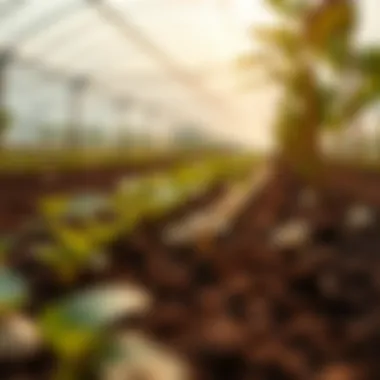
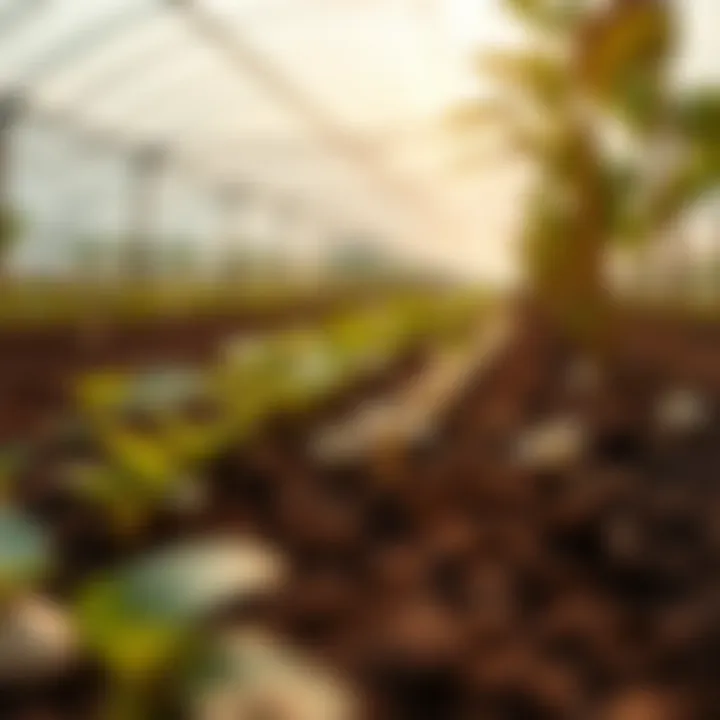
Additionally, the use of Trichoderma species increased nutrient absorption in rotational crops, particularly in nitrogen-hungry plants. The fungi establish symbiotic relationships with plant roots, enhancing nutrient uptake and therefore, allowing for increased yields without the need for synthetic fertilizers.
Role in Organic Farming
In organic farming, the presence of Trichoderma serves many essential functions. It aligns with the principles of organic agriculture that prioritize sustainability and ecological balance. Trichoderma acts as a natural biofungicide, offering a non-toxic means to combat soil-borne diseases.
Organic farmers benefit significantly from Trichoderma, as its natural mechanisms of action boost plant health and yield without resorting to harmful chemicals. The fungi can efficiently suppress pathogens, thus improving both the economic viability and environmental impact of organic farming practices.
Commercial Products and Formulations
The application of Trichoderma extends to a range of commercial products and formulations, making it accessible to a wider audience of farmers. These products are designed to meet the growing demand for sustainable agriculture tools that maintain soil health and enhance plant growth.
Biofungicides
Biofungicides derived from Trichoderma are among the most notable in the realm of biological pest control. These products stand out due to their high specificity; they target pathogenic fungi while leaving beneficial organisms unharmed. This specificity makes them a popular choice for many farmers looking to maintain healthy ecosystems.
One key characteristic of biofungicides is their ability to establish competitive environments in the soil, which can prevent the growth of harmful fungi. Since they are derived from natural organisms, biofungicides also align with the ever-increasing consumer preference for organic produce. The main disadvantage could be variability in effectiveness, largely dependent on environmental conditions.
Biofertilizers
On the other hand, biofertilizers based on Trichoderma provide an excellent source of nutrients that plants readily absorb. These products not only enhance nutrient availability but also improve soil structure, thus playing a vital role in sustainable farming.
The underpinning feature of biofertilizers is their capacity to foster microbial activity, which leads to the cycling of nutrients beneficial for plant health. This aspect places biofertilizers as a key ally for farmers aiming to reduce their chemical fertilizer footprint. However, the challenge remains in the need for tailored application methods, as their efficacy can be influenced by varying soil conditions.
In summary, incorporating Trichoderma into sustainable farming does not merely present a strategy for enhancing plant health; it symbolizes a holistic approach to agriculture that seeks to unify productivity with environmental sustainability.
Research Advancements
The study of Trichoderma and its influences on plants has made large strides in recent years. Advanced research not only unveils the intricate ways this fungus interacts with plant systems but also highlights the potential to enhance agricultural practices significantly. Particularly, understanding Research Advancements can pave the way for transformative methodologies in both conventional and sustainable farming. Rather than simply relying on traditional practices, these advancements encourage an innovative approach to plant health and productivity.
Genomic Studies
Genomics is a game-changer. By analyzing the DNA of Trichoderma species, scientists are digging deeper into how these fungi function at a molecular level. These studies allow lab-coats to pinpoint the genes responsible for traits such as antibiotic production and pathogen resistance. The possibilities are endless—researchers can identify specific genes that lead to superior strains. Moreover, these genomic insights facilitate the development of genetic modification techniques aimed at enhancing Trichoderma’s effectiveness as a biocontrol agent.
The outcomes of these studies often lead to more precise applications in the field, which can, in turn, reduce the reliance on conventional chemical inputs. This shift not only helps in minimizing the environmental footprint but also boosts crop resilience to stress factors like drought or disease.
Field Trials and Efficacy Studies
While laboratory data is crucial, practical application in real-world scenarios is where the rubber meets the road. Field trials are essential for testing the efficacy of Trichoderma in diverse agricultural environments. These studies assess various parameters, such as yield increase, disease suppression rates, and soil health improvements.
Conducting trials across multiple crops and climates reveals how Trichoderma behaves under different conditions. Such attention to detail helps researchers comprehend the conditions that maximize Trichoderma's benefits.
"Field trials often provide the final proof in the pudding, confirming that laboratory findings translate effectively into real-world gains."
It's not just about building a case for Trichoderma; it's about ensuring that farmers can reap tangible benefits. The results often lead to formulations that can be recommended with confidence.
Innovations in Application Techniques
Innovations in how Trichoderma is applied stand at the forefront of ensuring its success in agriculture. Effective application techniques are as crucial as the substance itself. Researchers are experimenting with various delivery methods, from seed coatings to soil drenches, to find the most effective means of introducing Trichoderma into growing systems.
For instance, encapsulation technologies are being developed to enhance the stability and longevity of Trichoderma in soil. This means that Mr. and Mrs. Farmer don’t have to constantly worry about timing their applications just right. The right tech can ensure that Trichoderma remains active in the soil for extended periods, ramping up its chances of promoting plant health and vigor.
Moreover, automation and precision application are making waves. Drones and specialized machinery can pinpoint locations in fields that require attention, allowing for optimal coverage and usage efficiency. With such advancements, relatively small amounts of Trichoderma can yield substantial benefits across larger areas, aligning perfectly with sustainable farming goals.
Challenges and Considerations
Incorporating Trichoderma into agricultural practices isn’t simply a walk in the park. As beneficial as these fungi can be, several challenges and important considerations are at play. Understanding these factors is crucial for both maximizing the effectiveness of Trichoderma and ensuring sustainable agricultural practices. The reality is that adopting this fungal ally requires careful thought and planning.
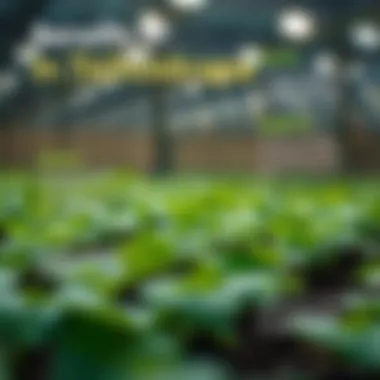
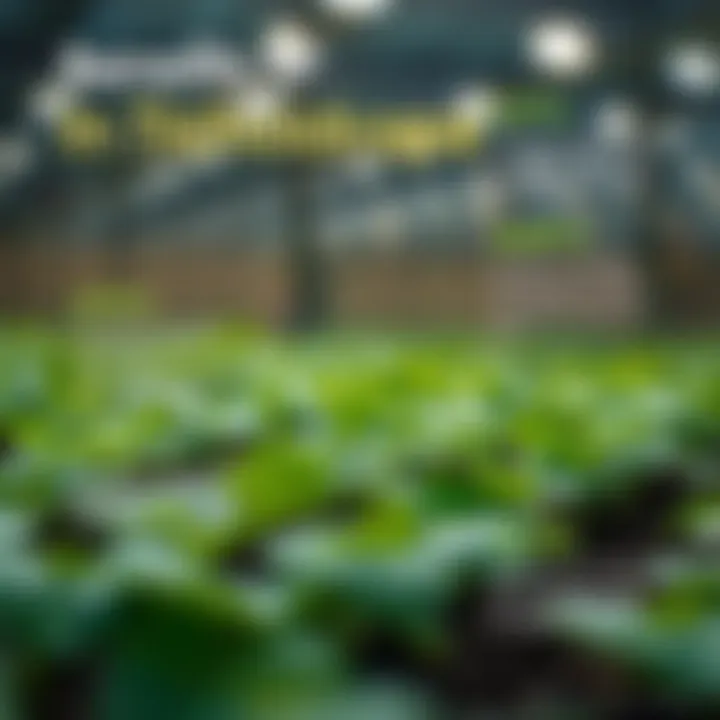
Environmental Stability
Environmental stability is a pivotal aspect to look into when introducing Trichoderma to various ecosystems. Trichoderma species perform best under specific conditions, such as appropriate moisture levels and temperature ranges. If the environment fluctuates too much, the effectiveness of these fungi may wane. For instance, adding Trichoderma in a region with erratic weather patterns might not yield consistent results. Research has shown that certain strains withstand drought conditions better than others.
Moreover, soil characteristics play a significant role too. Soil pH, nutrient availability, and organic matter influence how well these fungi establish themselves. If the soil is too acidic or alkaline, it can impede the growth of Trichoderma, reducing its benefits. Thus, farmers need to know their soil's context — it’s not just about throwing some fungi in and hoping for the best.
"The future of agriculture hinges on not just what you grow, but where you choose to grow it."
Compatibility with Other Agricultural Inputs
Compatibility is another key factor when working with Trichoderma. Integrating this organism with other agricultural inputs—like fertilizers, pesticides, or other biological agents—needs careful strategizing. Some chemical inputs may impede the growth of Trichoderma, limiting its usefulness. For example, synthetic pesticides can disrupt beneficial microbial communities in the soil. Aligning Trichoderma use with organic fertilizers or minimal chemical interventions is the best route to take. Conducting local trials helps understand which combinations work well and which do not.
Farmers often need to communicate with agronomists and other professionals to develop a coherent synergy among inputs. A well-balanced approach could see multiple inputs enhance each other's performance rather than counteracting efforts. Collaboration between these different constituencies shows the importance of gathering knowledge to maximize Trichoderma’s multifaceted benefits.
Regulatory and Safety Perspectives
Regulatory considerations also cannot be brushed aside. The introduction of biological agents into the ecosystem is not just a practical issue but a legal one too. Governments often have stringent regulations concerning the use of fungal agents like Trichoderma. These regulations are in place to protect human health, the environment, and agricultural integrity.
Farmers and companies need to be aware of these regulations, as navigating them can prove complex and might involve extensive paperwork or testing. It’s imperative to ensure that any strains of Trichoderma used are approved for agricultural application in a given region. Moreover, safety assessments must be conducted to ascertain that introducing these fungi does not create unintended consequences for human or environmental health. Thus, staying up-to-date on these evolving regulations ensures compliance and fosters responsible usage of biological agents.
Future Directions
The exploration of Trichoderma in plant growth and health continues to unveil new possibilities. As researchers dive deeper into its functions and applications, they not only enhance our understanding but also create avenues for innovative agricultural practices. There are several key areas in which future research could potentially revolutionize how we approach plant cultivation and health management.
Biotechnological Developments
Recent advances in biotechnology have begun to tap into the genetic diversity among Trichoderma species. For instance, researchers are using genetic engineering techniques to enhance the natural benefits of Trichoderma fungi. By isolating specific genes responsible for mycoparasitism and antibiotic production, scientists aim to create more potent biocontrol agents than those naturally occurring. This could mean greater efficacy in suppressing diseases and further promoting plant growth.
Moreover, synthetic biology approaches offer the potential to engineer Trichoderma for higher resilience under adverse environmental stress conditions. Tailoring these organisms to thrive in less favorable soils could have significant implications for sustainable agriculture.
Potential for Climate Resilience
Amid rising concerns about climate change, Trichoderma could play a pivotal role in developing more resilient agricultural systems. This fungus enhances soil health, which is crucial in mitigating the effects of drought and flooding. For example, Trichoderma species have been shown to improve water retention in soil, thereby boosting plant survival rates during dry spells.
Additionally, as global temperatures rise, understanding how different Trichoderma species react to fluctuating weather patterns is crucial. Research can inform which varieties are best adapted to changing climates, ensuring that farmers can continue to cultivate crops effectively in shifting conditions.
Expanding Research Horizons
The future of research on Trichoderma is anything but narrow. There's immense potential in interdisciplinary approaches, merging insights from plant biology, ecology, and microbial ecology to uncover deeper interactions in soil microbiomes. By understanding how Trichoderma interacts not just with plants but with other soil microbes, we might pave the way for synergistic applications in agriculture.
Furthermore, the exploration of Trichoderma's role in various ecosystems beyond agriculture also beckons. Ecosystem restoration efforts may benefit from incorporating these fungi, promoting diversity and resilience in degraded soils. This opens up a dialogue not just on the benefits of Trichoderma in farming but in the broader context of ecosystem management.
In summary, the future directions in Trichoderma research are promising and critical. The convergence of biotechnology, climate resilience, and expansive research avenues offers a rich landscape that could profoundly influence sustainable agriculture for years to come.
"By unlocking the potential of Trichoderma, we are not only looking to improve crop yield but also addressing fundamental ecological challenges."
As studies continue to unfold, they promise to shed light on effective strategies that align agricultural practices with ecological sustainability.
Closure
The discussion around Trichoderma's role in enhancing plant growth and health shines light on a fascinating intersection of fungal biology and agricultural practices. This article not only illuminated the various mechanisms through which Trichoderma interacts with plants but also painted a broader picture of its significant benefits in agriculture. The key findings underscore the importance of these fungi in sustainable farming, with practical implications for farmers and researchers alike.
Summary of Findings
Throughout the article, we have explored several dimensions of Trichoderma's contributions:
- Mycoparasitism: This includes its ability to outcompete or kill plant pathogens, highlighting a natural approach to disease management.
- Antibiotic Production: Trichoderma species produce a variety of metabolites that inhibit pathogens, showcasing their potential as biofungicides.
- Plant Defense Induction: These fungi can trigger plant defensive responses, essentially teaching plants to protect themselves better against diseases.
- Nutrient Availability: Trichoderma helps in enhancing nutrient uptake, making soil more fertile and plants healthier.
Additionally, the benefits are not merely theoretical; large-scale applications in agriculture have shown a noticeable boost in crop yields and overall soil health. The emphasis on sustainable practices further solidifies Trichoderma's relevance in modern agriculture, adapting to increasing demands for environmentally-friendly solutions.
Significance for Future Research
Looking forward, the significance of studying Trichoderma cannot be overstated. The potential for biotechnological developments springs from its natural properties. As we face challenges like climate change, the role of Trichoderma in fostering plant resilience can become more crucial than ever. By enhancing stress tolerance in crops, Trichoderma may support food production in fluctuating environmental conditions.
Future investigations can also focus on the diversity within the Trichoderma genus itself. Understanding the genetic basis of its beneficial traits could open new doors in bioengineering and agricultural innovations. Moreover, examining the compatibility of Trichoderma with other biological control methods may lead to more integrated pest management strategies, improving efficacy and reducing reliance on chemical inputs.







